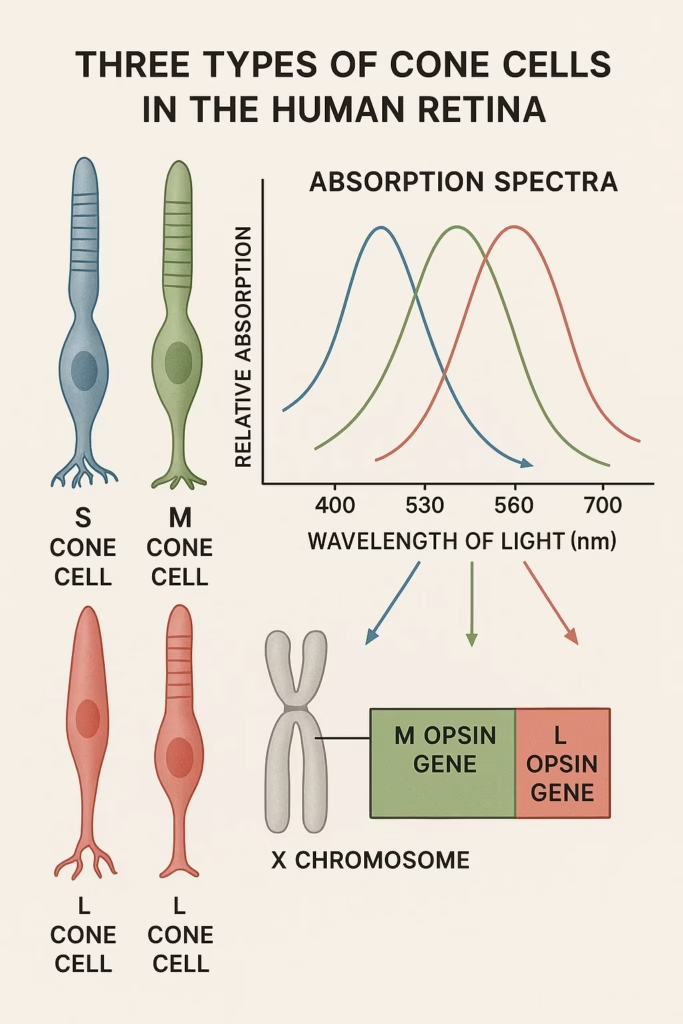Classical Vision Theory and Evolutionary Development**
How nature built the most perfect optical instrument in just 5 steps
🌅 EVOLUTION OF THE EYE: Nature’s Greatest Optical Marvel
Just as light has intrigued the human mind since the first fire, the eye has long represented biology’s greatest mystery. How could nature create such a perfect optical instrument?
Let’s explore together 5 key evolutionary steps that led to the modern eye:
🔬 STEP 1: Photosensitive Cells – The First Touch with Light
It all started with simple, individual cells containing protein molecules (opsins) sensitive to light. These cells could only detect the presence or absence of light (phototaxis).
“Photosensitive spots” still exist today in many invertebrates.
🔍 STEP 2: Formation of the Pit Eye – The First Camera Obscura
Selection favored organisms whose photosensitive cells became recessed. This indentation created a primitive “camera obscura” – light came from only one direction, enabling localization of the light source.
We see such structures in modern planarians.
🎯 STEP 3: Narrowing of the Opening – Improving Resolution
Further narrowing of the pit opening increased resolution (reduced overlap of light beams) but decreased light intensity.
The nautilus has such a “pinhole” eye.
🔮 STEP 4: Development of the Lens – Evolutionary Genius
Evolutionary genius is reflected in the development of transparent tissue filling the opening. The lens arose through exaptation – repurposing existing proteins (crystallins) to form a transparent structure that focuses light.
🌟 STEP 5: Refinement – Optimization for Perfection
Further selection optimized the lens shape, developed pigments for light control, and led to neural signal processing in the brain.
🌈 YOUNG-HELMHOLTZ THEORY: How Do We See Colors?
Thomas Young and Hermann von Helmholtz provided the foundation for our understanding of color perception. Their trichromatic theory remains the cornerstone of modern ophthalmology:
🧬 Evolution of Opsins:
- The oldest opsin is for blue (S) vision
- Opsins for green (M) and red (L) arose from gene duplication
- Genes for M and L opsins are located on the X chromosome – explaining more frequent color blindness in men
🎨 How the Brain Tricks Colors
Opsin absorption spectra have broad overlaps. The brain determines color not by analyzing “pure” signals, but by comparing relative responses of three cone types:
- Yellow = L and M cones strongly excited, S cone weakly
⚡ NEURAL PROCESSING: First Step Toward Rendering
Signals travel from cones to the brain through three parallel neural channels. Already in the retina, color opponency occurs:
- Red-green channel (mutual inhibition)
- Blue-yellow channel
This is just the first step in the incredible story of how the brain “renders” reality.
🔜 IN THE NEXT PART:
“How the Brain Renders Images as the First Graphics Card” – we’ll explore the neural hierarchy from retina to visual cortex!
➡️ Stay with us to discover how your brain creates the reality you experience!


Leave a Reply